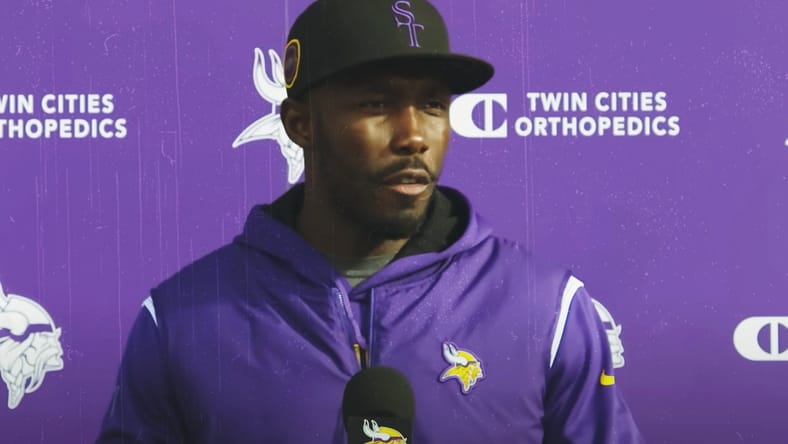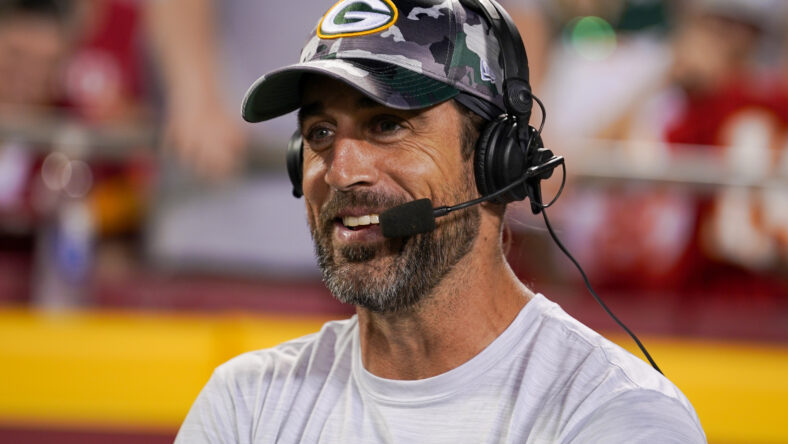Here’s What a Good Vikings Draft Might Look Like

The NFL Draft always creates drama and uncertainty, and it seems that’s the case this year more than in recent years. Will it be Alabama’s Bryce Young or Ohio State’s C.J. Stroud to be Carolina’s pick as their QB of the future at No. 1 overall (I say it’s Young)?
Where will athletic but raw (and inaccurate) QB Anthony Richardson from Florida land? And whither the highly talented but potential character risk in Georgia defensive tackle Jalen Carter (the Vikings hope it’s not to Detroit at No. 6 in the first round, part of their fortunate bounty from trading away Matthew Stafford two years ago or to Chicago at No. 9)?
Here’s What a Good Vikings Draft Might Look Like
For the Vikings at No. 23 overall, the mock drafters are all over the map — from a QB of the future, such as Richardson or Tennessee’s Hendon Hooker, to a much-needed top cornerback to a defensive tackle to replace Dalvin Tomlinson or a wide receiver to replace Adam Thielen and join Justin Jefferson and K.J. Osborn in the three-receiver sets.
Here’s how I think the Vikings would benefit most for this year and future years with their drafting this week:
First Round: I think cornerback is the top need for a Vikings team with a defense that ranked 31st in pass defense and is counting on the return to top health of injured corners Andrew Booth Jr. and Akayleb Evans from their 2022 draft class and free agent signee Byron Murphy (also coming off an injury-filled season).
This is a good corner draft class, and new defensive coordinator Brian Flores would be happy to have one of the following corners to start outside or in the slot: Devon Witherspoon (Illinois), Christian Gonzalez (Oregon), Joey Porter, Jr. (Penn State), Deonte Banks (Maryland), Cam Smith (South Carolina) or Emmanuel Forbes (Mississippi State).
However, if Richardson or Hooker falls to No. 23 or if they’re deemed worthy of trading up for by Adofo-Mensah and O’Connell, I think it’s fine to take a QB of the future if he’s the right guy where the team could benefit from excellent play and lower salary cap numbers for several years compared to Kirk Cousins’ large cap hits. The Vikings had 37-year-old All-Pro/Hall of Famer Fran Tarkenton coming off a Super Bowl in 1976 when we drafted Tommy Kramer in the 1977 first round, and Kramer took over in 1979 as a successful starter for many years.

But as I’ve often said, I still think Cousins is a top 10-12 QB, so the Vikings better be very confident in the ability of a young signal-caller before they draft him and prepare to jettison the soon-to-turn 35-year-old Cousins (who should have four to five more good years at least) after one more season.
It also wouldn’t surprise me if the Vikings picked defensive tackle Calijah Kancey from Pitt to help with the inside pass rush and run-stopping. But I would wait until later rounds before adding a wide receiver unless a superior talent has fallen as Randy Moss did to us 25 years ago.
Third Round: The Vikings sent their second-round pick to Detroit in the T.J. Hockenson trade, which was well worth it for the Pro Bowl tight end. With this No. 87 overall pick, I think the Vikings will go defense and draft a defensive lineman or edge rusher to play in their 3-4 scheme or a corner if they didn’t pick one in the first round. That is unless a sleeper QB is still around who the team really likes as a developmental QB, or a wide receiver rated higher than the third round has dropped this far.
With only five picks in this draft, I think this is where Adofo-Mensah will trade down a few spots (but stay in the third round) to pick up an extra fourth or fifth-round pick. I also could see the Vikings getting itchy and trading a 2024 high pick to move into the late second or early third round (but I wouldn’t trade a 2024 first-round pick to move into the second round unless it’s for a player rated in the top 20 who has fallen and fits a position of need).
Fourth Round: Here’s where I see Minnesota grabbing a wide receiver with speed, such as Nebraska’s Trey Palmer, who ran the fastest 40 at the Combine (4.33 seconds). He could help in keeping teams from overloading in coverage on Jefferson.

Josh Downs of North Carolina and Tyler Scott of Cincinnati also are interesting wide receiver prospects but are likely to be taken in the second or third rounds, so they could be a trade-up target.
Fifth Round: As Mike Zimmer famously said, you can never have enough corners, so here’s a good spot to take another corner to add depth at a position where injuries hurt the team last season, and so many of last year’s corners are gone in free agency (Patrick Peterson, Duke Shelley, Kris Boyd, and Chandon Sullivan) or released (Cam Dantzler).
Sixth Round: This is a good round for the Purple to draft a linebacker, preferably an outside backer/edge rusher who is raw and can be developed, or an inside backer to possibly replace Jordan Hicks in 2024 (he’s 31 years old in June and a free agent next year).
Stay tuned…there will be plenty of excitement and intrigue in the early rounds this Thursday and Friday with the Vikings among the many teams that may spring a surprise in the first round or go as predictable and address their corner need.
Around the NFL Observations:
1. As of now, none of the decisions look wise by the Rams, Broncos, or Browns in mortgaging the future by trading multiple high draft picks for veteran QBs in recent years (Matthew Stafford, Russell Wilson, and Deshaun Watson, respectively) as they have set up the Lions, Seahawks, and Texans for success if the draft picks acquired by those teams produce as expected.

I think Aaron Rodgers can reverse this trend as he joins a Jets team with a lot of talent on offense and defense, and the Jets didn’t trade away multiple first-round picks in the deal. Rodgers should be highly motivated to prove the Packers made a mistake by ever drafting Jordan Love and starting the clock toward Rodgers’ departure.
But he’ll need to lead the Jets to the playoffs — and long playoff runs — over the next two to three seasons at least to make this deal successful for New York when a second-round pick this year and at least a second-rounder that likely will turn into a first-round pick next year (if Rodgers plays 65% or more of the offensive snaps in 2023) are involved (along with Green Bay moving up from No. 15 to No. 13 overall this year).
There’s also the risk that the egocentric Rodgers won’t mesh well with his new team, or he’ll decide to quit after one season after he has already collected the $58.3 million option bonus in his contract for this year. These possibilities would make me plenty nervous if I’m Jets GM Joe Douglas.
An NFL GM better be sure — or as close as possible given the uncertainties of pro sports and top quarterbacks — before trading multiple high draft picks for veteran quarterbacks as it can bite them come draft day, as is the case for the Rams, Broncos, and Browns this week.
I’d rather keep my high picks and use them to draft a young QB who develops into a star (a la Patrick Mahomes, Joe Burrow, and Jalen Hurts) and build a great supporting cast around that QB rather than worrying about a vet QB not panning out. Perhaps that’s what Vikings GM Kwesi Adofo-Mensah and Coach Kevin O’Connell are thinking this week?
Jeff Diamond is a former Vikings GM, former Tennessee Titans President and was selected NFL Executive of the Year after the Vikings’ 15-1 season in 1998. He now works for the NFL agent group IFA based in Minneapolis and does other sports consulting and media work along with college/corporate speaking. Follow him and direct message him on Twitter– @jeffdiamondnfl

You must be logged in to post a comment.